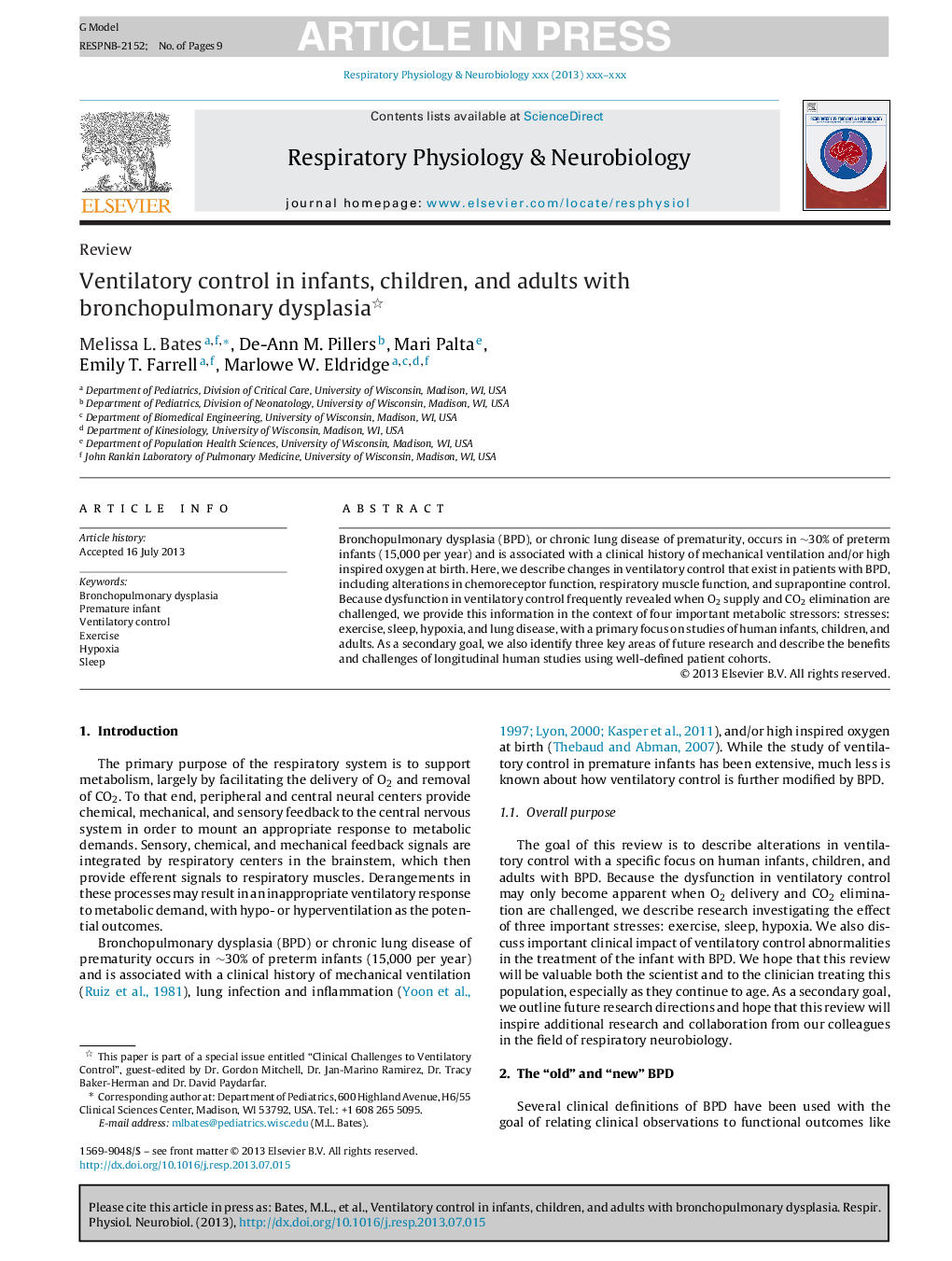| Article ID | Journal | Published Year | Pages | File Type |
|---|---|---|---|---|
| 5925999 | Respiratory Physiology & Neurobiology | 2013 | 9 Pages |
Abstract
Bronchopulmonary dysplasia (BPD), or chronic lung disease of prematurity, occurs in â¼30% of preterm infants (15,000 per year) and is associated with a clinical history of mechanical ventilation and/or high inspired oxygen at birth. Here, we describe changes in ventilatory control that exist in patients with BPD, including alterations in chemoreceptor function, respiratory muscle function, and suprapontine control. Because dysfunction in ventilatory control frequently revealed when O2 supply and CO2 elimination are challenged, we provide this information in the context of four important metabolic stressors: stresses: exercise, sleep, hypoxia, and lung disease, with a primary focus on studies of human infants, children, and adults. As a secondary goal, we also identify three key areas of future research and describe the benefits and challenges of longitudinal human studies using well-defined patient cohorts.
Related Topics
Life Sciences
Biochemistry, Genetics and Molecular Biology
Physiology
Authors
Melissa L. Bates, De-Ann M. Pillers, Mari Palta, Emily T. Farrell, Marlowe W. Eldridge,
